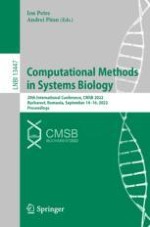2022 | OriginalPaper | Buchkapitel
Prioritization of Candidate Genes Through Boolean Networks
verfasst von : Clémence Réda, Andrée Delahaye-Duriez
Erschienen in: Computational Methods in Systems Biology
Aktivieren Sie unsere intelligente Suche, um passende Fachinhalte oder Patente zu finden.
Wählen Sie Textabschnitte aus um mit Künstlicher Intelligenz passenden Patente zu finden. powered by
Markieren Sie Textabschnitte, um KI-gestützt weitere passende Inhalte zu finden. powered by
